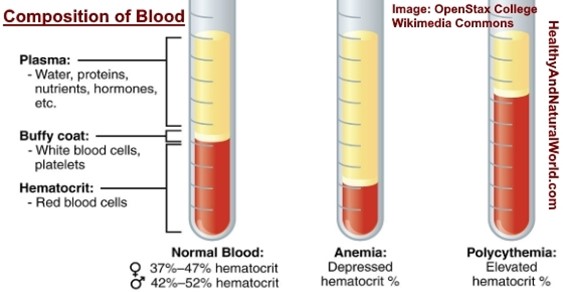Postpartum Hemorrhage > Maternal & Newborn
Exam Review
Signs and symptoms
Total Questions : 5
Showing 5 questions, Sign in for moreWhat is the amount of heavy vaginal bleeding in normal delivery that may indicate postpartum hemorrhage?
Explanation
Heavy vaginal bleeding in normal delivery that may indicate postpartum hemorrhage is more than 500 mL.
Postpartum hemorrhage (PPH) is a serious condition that can lead to death if not treated promptly.It is caused by the uterus not contracting properly or by retained placenta fragments or damage to the reproductive organs.
Choice B is wrong because more than 1000 mL of blood loss is the definition of PPH after a cesarean delivery, not a vaginal delivery.
Choice C is wrong because less than 500 mL of blood loss is normal after a vaginal delivery and does not indicate PPH.
Choice D is wrong because less than 1000 mL of blood loss is normal after a cesarean delivery and does not indicate PPH.
What is the amount of heavy vaginal bleeding in cesarean delivery that may indicate postpartum hemorrhage?
Explanation
Heavy vaginal bleeding in cesarean delivery that may indicate postpartum hemorrhage is more than 500 mL.
Postpartum hemorrhage (PPH) is severe bleeding and loss of blood after childbirth.It’s a serious and dangerous condition that can lead to death.
Choice B is wrong because more than 1000 mL of blood loss is too high for the definition of PPH after cesarean delivery.
Choice C is wrong because less than 500 mL of blood loss is normal after cesarean delivery.
Choice D is wrong because less than 1000 mL of blood loss is not considered heavy bleeding after cesarean delivery.
What may indicate internal bleeding in postpartum hemorrhage?
Explanation
relaxed uterus may indicate internal bleeding in postpartum hemorrhage.This is because the uterus is not contracting properly to compress the blood vessels where the placenta was attached, leading to excessive blood loss.A relaxed uterus is also known as uterine atony, which is the most common cause of postpartum hemorrhage.
Choice A is wrong because a tense and rigid uterus may indicate retained placenta or uterine clot, which are other causes of postpartum hemorrhage.
These conditions prevent the uterus from contracting fully and expelling the placental fragments or clots.
Choice C is wrong because a soft uterus is similar to a relaxed uterus and may also indicate internal bleeding in postpartum hemorrhage.
Choice D is wrong because a normal uterus is not a sign of postpartum hemorrhage.A normal uterus should be firm and contracted after delivery to prevent excessive bleeding.
Normal ranges for blood loss after delivery are less than 500 mL for vaginal delivery and less than 1000 mL for cesarean delivery.Postpartum hemorrhage is defined as blood loss of more than these amounts or blood loss accompanied by signs of hypovolemia within 24 hours of delivery.
What is the specific gravity of concentrated urine in postpartum hemorrhage?
Explanation
The specific gravity of urine is a measure of the concentration of solutes in urine.
It reflects the ability of the kidneys to regulate water balance and excrete waste products.The normal range for urine specific gravity is1.005 to 1.030.
In postpartum hemorrhage, there is a loss of blood volume that leads to decreased blood pressure and reduced perfusion of the kidneys.The kidneys respond by conserving water and producing concentrated urine with a high specific gravity, usuallygreater than 1.030.
ChoiceBis wrong because a urine specific gravity lower than 1.030 indicates a dilute urine that is not consistent with postpartum hemorrhage.
ChoiceCis wrong because a urine specific gravity greater than 1.020 is still within the normal range and does not reflect the degree of water conservation that occurs in postpartum hemorrhage.
ChoiceDis wrong because a urine specific gravity lower than 1.020 indicates a very dilute urine that suggests excessive fluid intake, diabetes insipidus, or kidney failure.
These conditions are not associated with postpartum hemorrhage.
What is the decrease in red blood cell count that may indicate postpartum hemorrhage?
Explanation
Hematocrit is the percentage of red blood cells in the blood.
A decrease in hematocrit indicates blood loss or anemia.Postpartum hemorrhage (PPH) is defined as blood loss of ≥ 500–1000 ml within 24 hours after delivery.PPH can cause a significant drop in hematocrit and hemoglobin levels, which can lead to hypovolemia and shock.A normal hematocrit range for women is 36% to 48%.
Therefore, a hematocrit level below 30% may indicate PPH.
Choice B. Hematocrit > 30% is wrong because it does not indicate a decrease in red blood cell count or blood loss.A hematocrit level above 30% may be normal or indicate dehydration, polycythemia, or other conditions.
Choice C.Hematocrit < 40% is wrong because it is within the normal range for women and does not indicate a significant decrease in red blood cell count or blood loss.
Choice D. Hematocrit > 40% is wrong because it does not indicate a decrease in red blood cell count or blood loss.
A hematocrit level above 40% may be normal or indicate dehydration

Sign Up or Login to view all the 5 Questions on this Exam
Join over 100,000+ nursing students using Nursingprepexams’s science-backend flashcards, practice tests and expert solutions to improve their grades and reach their goals.
Sign Up Now

